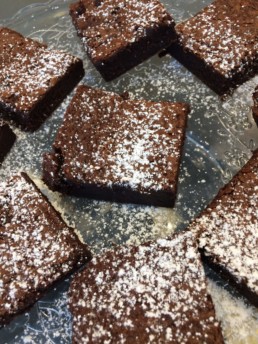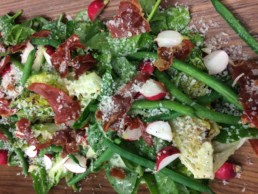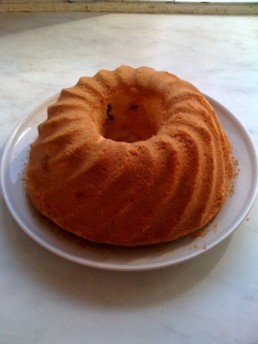Oven proof….
March heralds the welcome return of longer days and warmer weather, yet from a cook’s point of view, it is still very much a winter month. When northern winds sweep in from the Fenlands, Cambridgeshire weather certainly feels more like the tail end of winter than oncoming spring. This makes March the perfect month for mood enhancing bakes. A good cake lifts the spirits and can be thrown together with relatively limited effort.
By far the easiest types of cake to make are tray bakes. They may not be up there in the looks stakes, compared to layered and beautifully shaped Bundt type cakes, but they tend to be wonderfully moist and are so easy to make. While we still enjoy an abundance of really good citrus fruit, oranges make an obvious cake ingredient. Not only does the tangy juice marry perfectly with buttery sponge, the zest adds a lovely smattering of colour and texture to icing and frostings.
One of our favourite late winter treats in the café are our rich, tray baked orange squares. We make a really indulgent sponge by beating 4 large organic eggs with 275g caster sugar until very light and fluffy and then enrich that with 150ml fresh orange juice and 300g melted, unsalted butter. Yes this does sound like a lot of butter and sugar, but you will get 20 squares from this quantity and providing your character is strong enough to stop after one piece, you will have consumed around 1 tablespoon each of butter and sugar, which is hardly alarming. 550g of plain flour and 1 1/2 tablespoon of baking powder gets added before the batter is poured into a large, paper lined oven tray and baked at 175C for 25 minutes. We spread the cooled cake with pretty pale orange icing made from melted butter, icing sugar and fresh orange and top with thinly strips of caramelised orange zest.
Another all-time winter favourite of ours is our Raspberry and Coconut tray bake. The secret to this cake is that it is baked in two stages, creating an incredibly moreish and gooey texture. It tastes absolutely fantastic when partnered with a cup of Earl Grey afternoon tea.
We start by rubbing 110g caster sugar and 250g plain flour with 125g cold butter, then add 1 large egg and a teaspoon of vanilla paste and spread this out in a paper lined medium sized baking tray. While the sponge bakes for 15-20 minutes at 180C, we make the second sponge by whisking 2 large organic eggs with 110g sugar until very light and fluffy and then fold in 200g desiccated coconut. The cake comes out of the oven, and while still warm, gets topped with a generous layer of good quality raspberry jam before the coconut mixture is poured over. It then goes back into the oven for 25-30 minutes and is left to cool in the pan before being cut into squares.
Out of all our cake recipes, none elicits more requests access to the recipe than our Brownies. Brownies are pretty ubiquitous, and most self respecting cafés will have a Brownie on the repertoire. But how the quality varies. Disappontingly often, Brownies are dry rather than gooey. All too often they taste of margarine and cocoa powder rather than good quality chocolate and butter. And then there is the question of whether to nut or not to nut. I confess to being a bit of a purist when it comes to Brownies and I feel quite strongly that nuts has no place in a Brownie. They contrast far too greatly with the light, gooey, intensely chocolatey piece of cake. So, for those of you looking for the ultimate Brownie recipe, our recipe for the perfect Brownie can now be found online, in our blog.
Savoury oven baked treats are also very much part of what we want to eat while the evenings are still chilly. Readers who committed themselves to austere weeks in January and February might be ready for a little indulgence and few things are more indulgent than a properly made Croque Monsieur. A good Croque Monsieur should be both crispy and gooey, and have a pronounced taste of cheese with a hint of mustard.
The standard French snack version is made from sliced white bread, cooked (rather than smoked or cured) ham and white cheese sauce. When we make it we prefer to use our white sour dough, which has plenty of texture and flavour, Bresaola (air cured beef) and a combination of mature Comté and aged Parmesan. We start by frying the slices of sour dough bread in butter. We then make a thick cheese sauce, enriched with both types of cheese, coarsely grated, some Dijon mustard and a pinch of nutmeg. The Monsieurs are assembled by sandwiching the bread with sauce and a couple of slices of Bresaola, then topping with more sauce and baked until golden and crisp. For good measure, serve with a crisp mixed salad.
Cookery School Café Brownies
February 23, 2017
Festive feel
December 5, 2016
Seasonal lamb recipes
November 25, 2016
Swedish sponge cake with winter Orange
February 24, 2015




